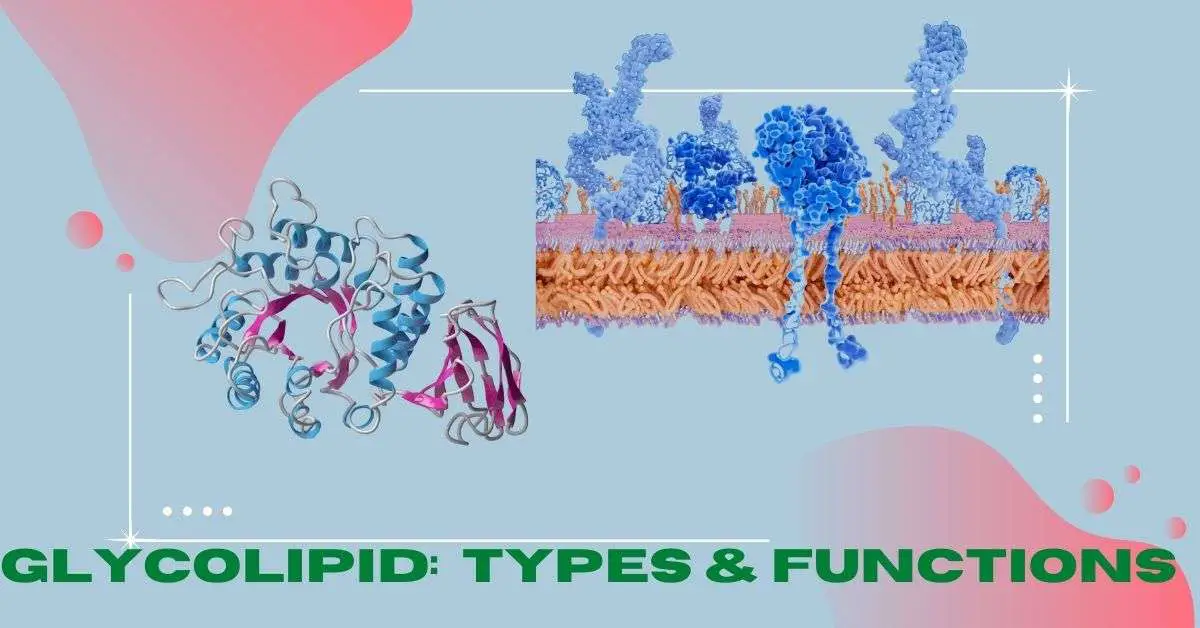The term “glycolipid” defines the combined lipids of the glycerol moiety and these fatty acid chains. Glycolipids occur in nature in combination with proteins, forming larger structures known as glycosomes.
Glycolipid is an amphiphilic molecule that shows promise for fighting cancer. It looks like a small soap-bubble; surfactant-based, it dissolves in water (hydrophilic), and within that bubbles small amount of glycolipid dissolves like micelle (amphiphilic). Glycolipid plays a vital role in defense against invading pathogens.
In cells, glycolipid anchors proteins to the membrane or to other target macromolecules in a variety of ways. In some groups, glycolipid is even phosphorylated and used as a signaling molecule to transmit information from one part of a cell to another.
You may also read: Neurohypophysis: Structure and Functions
Glycolipid is a glycosylceramide (also referred to as a neutral fat) and functions as an important cell membrane component. A glycolipid is a structurally complex membrane lipid that is composed of a variety of sugar and lipid components, with both an external and an internal leaflet.
Glycolipids are covalently linked to proteolipid chains in the cell membranes of most eukaryotic cells. In humans, they comprise five percent of membrane fatty acids, eight percent of specific phospholipids, at least four percent of sphingomyelins, and up to 15 percent of total lipids.
Glycolipids have diverse physiological roles, including roles in cell signaling and membrane regulation, ion channel modulation, and neurotransmitter playing a role.
Glycolipids are a diverse group of lipids that contain carbohydrate residues covalently linked to the acyl chains of sphingolipids. Although they account for as much as 60% of all membrane lipids in animals and plants, their functions remain poorly understood.
In cell biology, glycolipid is a molecule made up of a lipid and a carbohydrate. Glycolipids include important biological molecules such as gangliosides, cell surface mucins, and sphingolipids.
Glycolipids, as the name suggests, are lipids with sugar as their major component. In glycolipids, this sugar moiety is attached to a linear hydrocarbon chain that may have branching points. Owing to their amphiphilic nature glycolipids can form complexes with other amphiphiles such as proteins and also water molecules.
A glycolipid is an amphiphilic molecule composed of a lipophilic (oil-loving) carbohydrate (glyco-) and a hydrophile (lipo-) or amphipathic molecule. This lipid is produced in the cytoplasm of cells, mainly in the liver, kidney, lung, and spleen.
Glycolipid is a special fat found in most cells of the body. It is also an antigen found on the surface of most cells of the body, with exceptions being red blood cells and certain leukocytes. Glycolipid-based antigens are easily recognized by antibodies, which attack any foreign substances they find.
Glycolipids are a type of lipids composed of a carbohydrate connected to some molecules of fatty acids. Glycolipids are characterized by a head group attached to a long, hydrophilic “tail”. This tail is either a polysaccharide or a phosphate group. Glycolipids are measured in concentrations on the sugar-gram scale. A variety of O-linked glycolipid antigens decorate the surfaces of human cells and may be involved in recognition during immune system response.
Glycolipids, generally known as plasmalogens, are very important lipids in all types of living cells such as bacteria, algae, protozoa, plants and animals. The glycolipid molecule always contains a carbohydrate portion attached to two fatty acid chains of length varying from 16 to 28 carbon atoms.
Glycolipids are part of the structural lipids found in the cell membranes of all known life on Earth. Glycolipids are derived from glyceraldehyde 3-phosphate and one of the following fatty acids: palmitic acid, stearic acid, arachidic acid, lauric acid, myristic acid, pentadecanoic acid. Glycosyltransferases can modify these lipids by incorporating sugars into glycolipids to form glycosphingolipids. Glycocerebrosides are present in the myelin sheaths of neurons.
Glycolipids are a large group of lipids in which one part of the lipid is bonded through glycosidic linkage to a group consisting of a carbohydrate, or more rarely another lipid.
In glycoproteins, a series of glycose residues is added to a protein during posttranslational modification. In most cases, the carbohydrate residues originate from a galactose-α(1,4)-galactose disaccharide attached to a core protein by an oligosaccharide extension. This specific structure is most associated with the glycolipid class of carbohydrates.
Glycolipids are hydrophobic due to the multi-substituted nature of their lipid moieties. Glycolipids are the main component of the mycobacterial cell wall, forming part of its structure and integrity.
Types of Glycolipids
Glycolipids can be classified into a variety of types depending on the structure of the sugar moiety. Defined types include mono-, di-, tri-, tetra-, and pentasaccharides.
Glycolipids are usually classified depending on which carbohydrate moiety they possess and on the number and identity of attached fatty acid residues.
Functions of Glycolipids
• Glycolipids play major roles in various fungal systems as well as in the cell membranes of plants.
• In plants, glycolipid can be found as a storage lipid.
• It can also be identified as a precursor for membrane lipids, such as plant sterols and plant terpenes.
• Glycolipids may play a role in several cellular activities, including hormone transport or viral entry into the cell.
• Glycolipid plays a vital role in defense against invading pathogens.
• A major constituent of liposomes, which are key agents of the body’s immune response against foreign molecules.
• Glycolipid is a monosaccharide that serves as a precursor to both glycosaminoglycans and glycoproteins.

